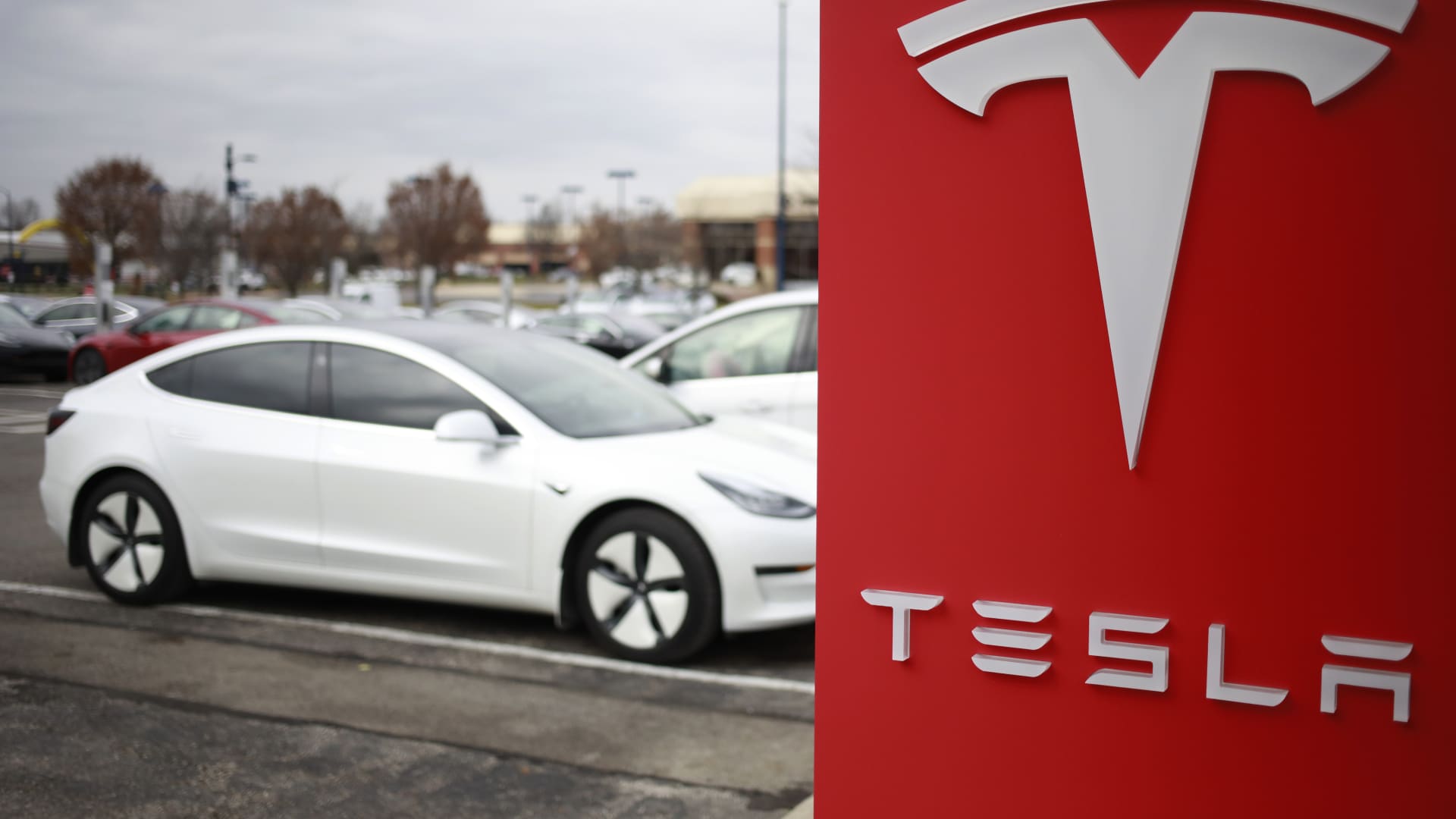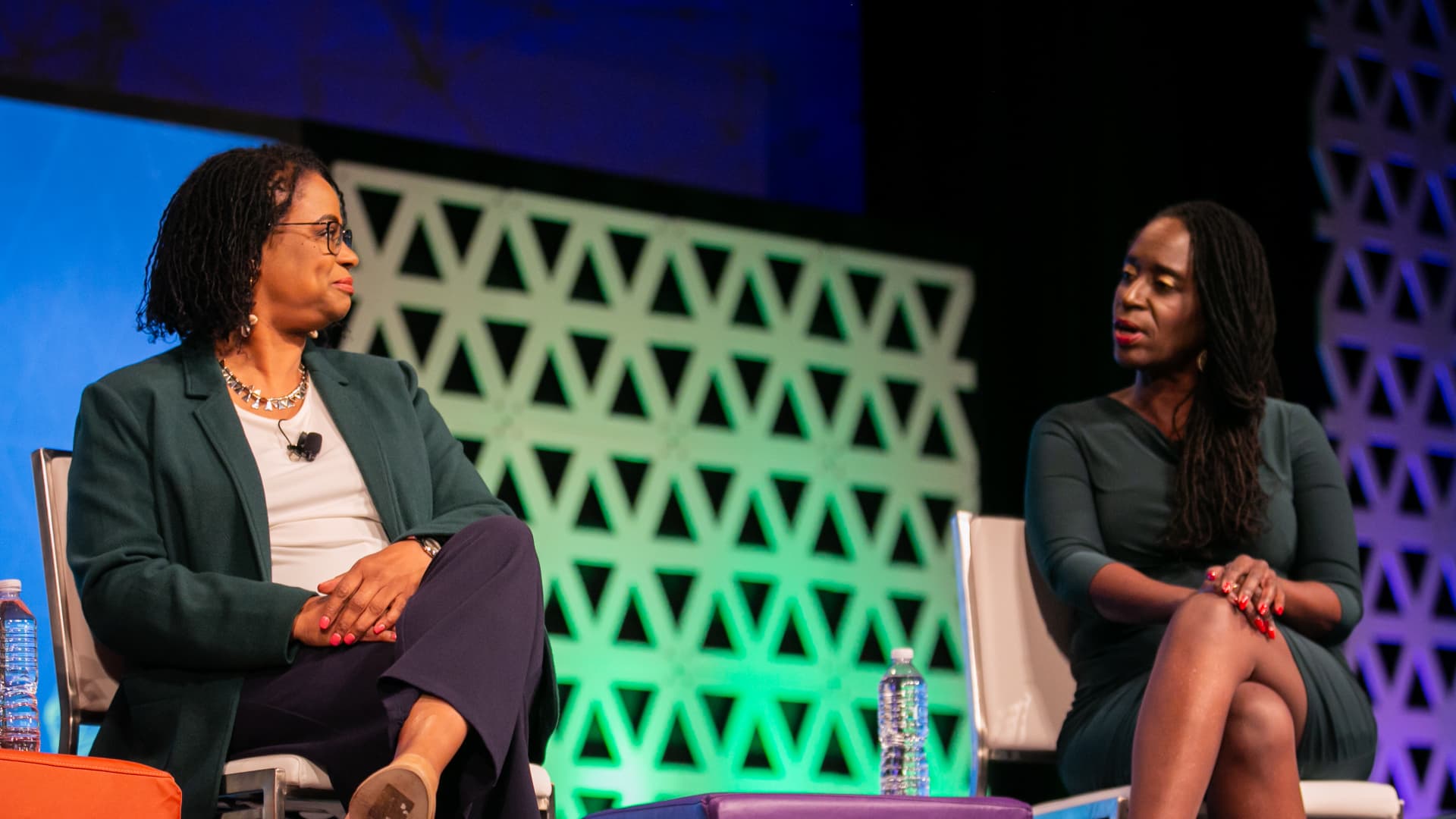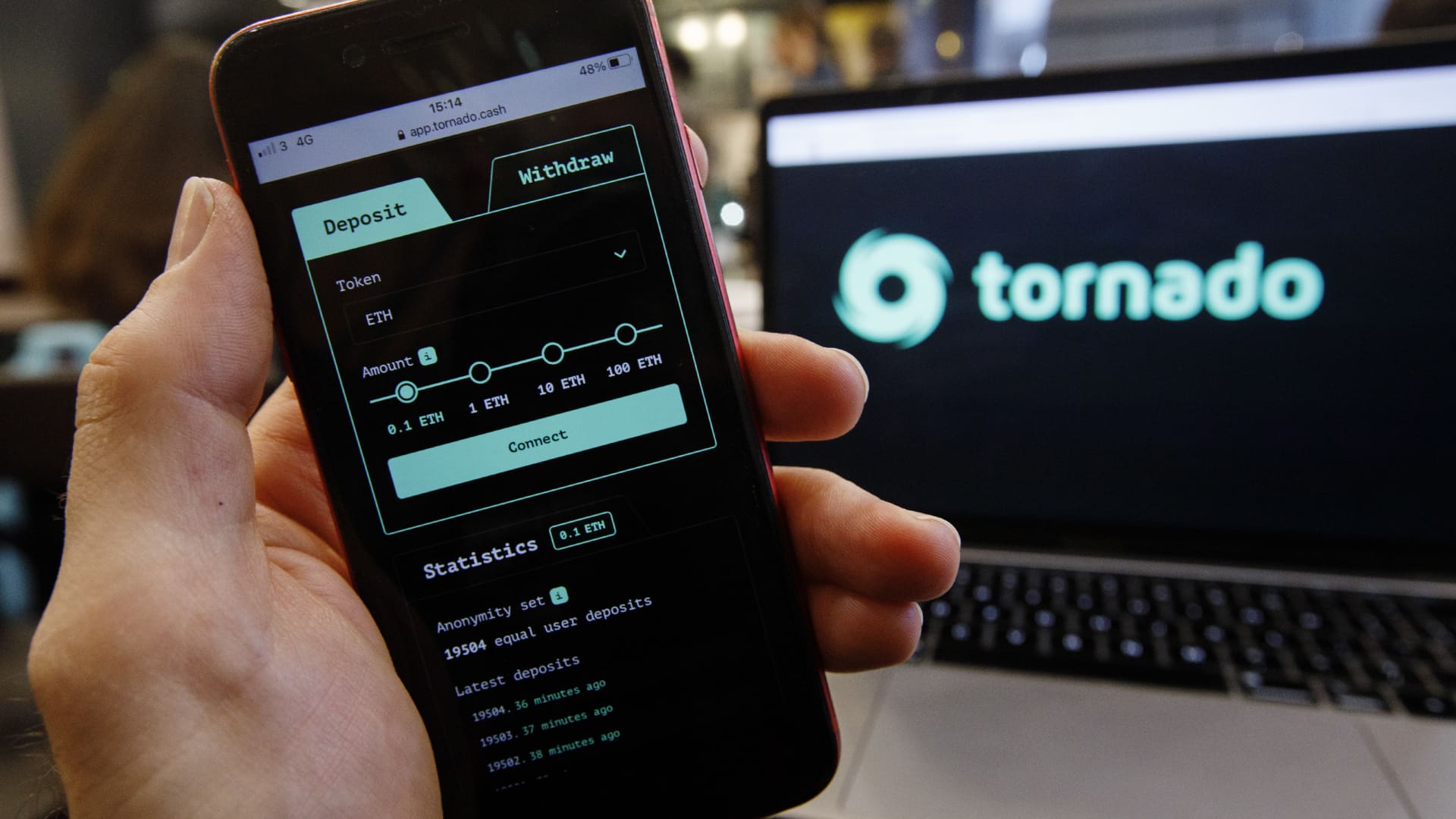Tesla grows revenue 42%, but automotive margins decline


Tesla reported earnings after the bell, and the results sent the stock up about 2% after hours.
- Earnings per share (EPS): $2.27 (adjusted) vs $1.81 expected, according to Refinitiv
- Revenue: $16.93 billion, vs. $17.1 billion expected, according to Refinitiv
Automotive gross margin came in at 27.9%, down from 32.9% last quarter and 28.4% a year ago, impacted by inflation and more competition for battery cells and other components that go into electric vehicles. Automotive revenues made up $14.6 billion of the company’s total, with $1.47 billion coming from services and other revenue, and $866 million from the company’s energy segment.
The company generated $344 million in automotive regulatory credits revenue in the second quarter, the company said in its shareholder deck. That’s a $10 million or nearly 3% decline from the same period in 2021.
Tesla has grown its charging infrastructure more than its store and service centers, reporting 709 store and service locations for the quarter and 3,971 Supercharger locations (with 36,165 total Supercharger connections) in the second quarter. Those numbers represented 19% growth in store and service center locations year over year and a 34% growth in the number of charging locations.
The company offered limited detail about its investments and sales of cryptocurrency, writing, “As of the end of Q2, we have converted approximately 75% of our Bitcoin purchases into fiat currency. Conversions in Q2 added $936M of cash to our balance sheet.” Tesla made waves among crypto enthusiasts when it announced in early 2021 that it had purchased $1.5 billion worth of bitcoin.
Early this month, Tesla reported vehicle deliveries of 254,695 electric cars for the period ending June 30, 2022, showing 27% growth from the year-ago quarter, but an 18% decrease sequentially. Deliveries are the closest approximation of sales Tesla discloses. Its Model 3 and Model Y vehicles comprised 93% of those deliveries.
Russia’s brutal invasion of Ukraine and Covid outbreaks in China exacerbated ongoing semiconductor and parts shortages, along with other supply chain snags. Covid restrictions in Shanghai forced Tesla to temporarily suspend or limit production at its factory there during the second quarter of 2022.
CEO Elon Musk also lamented the high costs of starting up production at new factories in Austin, Texas and Grünheide in Brandenburg, Germany. During an interview with Tesla Owners Silicon Valley, a company-recognized fan club, Musk said the two new factories “are gigantic money furnaces.”
The CEO also announced headcount cuts in June.
Tesla’s cryptocurrency holdings also likely declined in value substantially, depending on how the company traded them. Barclay’s analyst Brian Johnson said on Monday that he expects Tesla to record an impairment of up to roughly $460 million due to bitcoin declines.
On the brighter side, Tesla recently marked a milestone with an employee posting on LinkedIn this week that the company surpassed production of 2 million vehicles at its Fremont, California factory.
According to a White House memo from June 28, Tesla also plans to “begin production of new Supercharger equipment that will enable non-Tesla EV drivers in North America to use Tesla Superchargers.”
This post has been syndicated from a third-party source. View the original article here.




